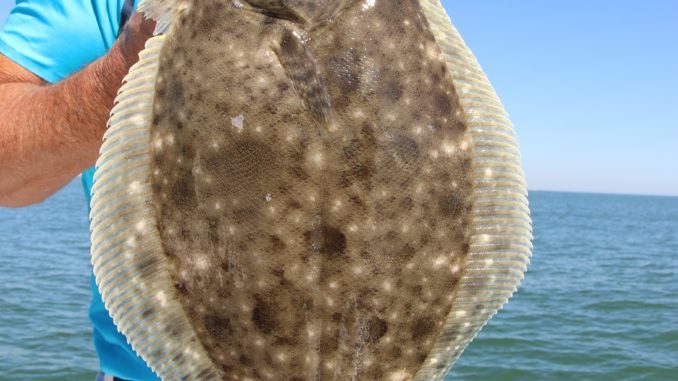
Flounder fishing is hot in the Murrells Inlet area right now, and while many anglers prefer to anchor down near likely holes and probe those areas with jigs or mud minnows, Dale Turner of Pawleys Island prefers to use a different tactic.
Turner’s favorite method for flounder fishing is what he calls the “drift and bump,” which he describes as being loosely similar to trolling.
“This is especially effective when I’m in a creek that has good flounder bottom. And rather than troll with my motor, I prefer to do this when a slight wind will push my boat along. I also like to drift broadside rather than bow first. It looks awkward to a lot of folks, but it works,” said Turner.
Although he relies primarily on the wind or current to push his boat along, Turner does use his electric motor to keep his boat positioned properly.
“I keep it on the lowest speed necessary to keep the boat positioned the way I like, then I let the wind or current do the rest. I like drifting along parallel to the bank, and keep all my lines out of the downwind side of the boat, so you’re not running over the lines. You can just keep the line tight and let the jigheads bump the bottom,” he said.
Turner said it’s important to keep the bait or lure on the bottom, so he likes to use fairly heavy jigheads.
“I like a 3/4-ounce jighead. And I use that whether I’m fishing with grubs or if I’m using live mud minnows,” he said.
Turner likes to fish with four rods at a time, and if he has fewer than four people on the boat, he will put the extra rods in rod holders. He prefers not to use the reel at all until a fish is on the line when fishing this way.
“You want to keep enough line out that the jig stays on the bottom, but other than than, you’re just holding the rod, waiting to feel a bite. Usually, when the flounder takes it, it will feel a little like dead weight for a bit. The flounder doesn’t just bite and let the bait go though. It will follow it, and I think it’s best to let it hook itself. It’s easy to set the hook too soon otherwise, but one thing about fishing this way is the flounder is going to take the bait in a little bit quicker than they do when you’re reeling in a stopping. They sense the bait is getting away when fishing like this, and they seem to chomp down a little more quickly,” he said.
“I like this way when I’m in an area that I know is a good flounder hole, but I also like doing it when I’m on water I’m unfamiliar with because you can cover a lot of water in a short period of time. It wont’ take long before you know whether any flounder are there or not,” he said.




